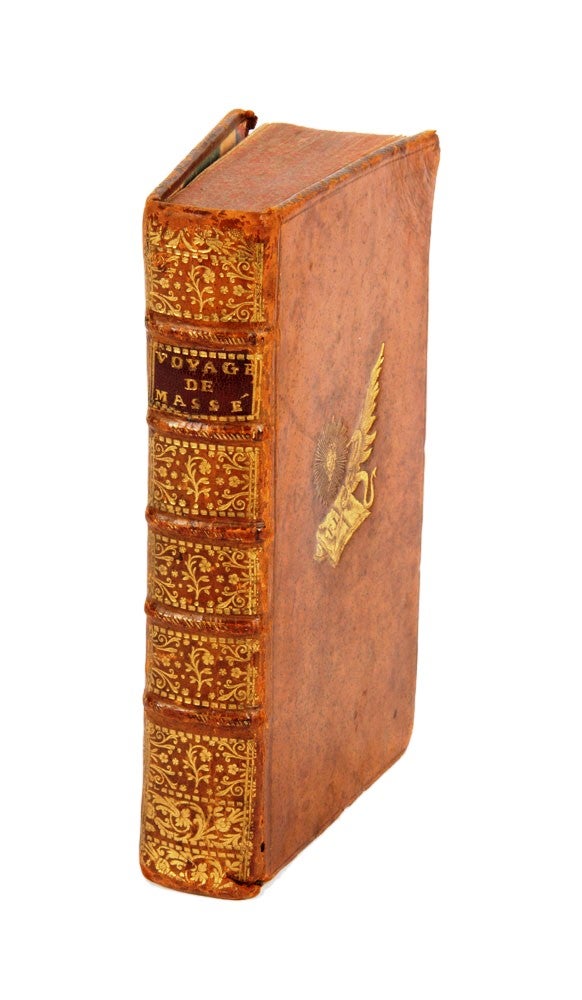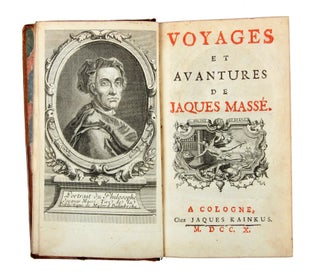Voyages et Avantures de Jacques Massé.
Cologne: Jaques Kainkus, circa 1734.
Duodecimo, frontispiece, title-page printed in black and red; contemporary sprinkled calf, spine gilt in compartments.
The Australians are obsessed with mining
A handsome copy of the third edition (Rosenberg edition 'C'), with frontispiece portrait of Massé and title-page vignette of Mercury. Friederich comments that the importance of mining and irrigation to the Australians makes it the only work 'to foreshadow what has actually come to pass in modern Australia'.
A handsome copy of the third edition (Rosenberg edition 'C'), with frontispiece portrait of Massé and title-page vignette of Mercury. Friederich comments that the importance of mining and irrigation to the Australians makes it the only work 'to foreshadow what has actually come to pass in modern Australia'.
Tyssot de Patot was a well-known Huguenot free-thinker, whose writings were a continual source of scandal: Voltaire thought that he had 'carried the torch of discord into their homeland'. Certainly the antagonistically anti-religious stance of this novel created much ill-feeling. Atkinson comments that because 'open criticism of the Bible is so frequent' he will have to content himself with listing just a few of the more extreme examples.
Massé shipwrecks on the Southern continent at '44 South latitude, almost at the point where Kerguelen Island will be found to be on modern maps' (Atkinson). Whilst most of the survivors of the wreck are content to maintain a large presence on the coast, Massé and his friend Moret travel inland where they settle in an enormous and well-organised utopia, 'a plentiful, fruitful country, a land of blessing and peace … where human blood is sacred and safe from the rage and tyranny of great men'. They become so enamoured of their Australian hosts that they abjure their faith and their European heritage, and it is only when Moret is betrayed by his liaison with a treacherous queen that they reluctantly flee, escaping rather fortuitously by a subterranean river which deposits them close by the original settlement. They remain besieged in the camp for another twelve years before they are finally picked up by a Portuguese ship.
Rosenberg argues for a date of around 1734 for this edition, to coincide with the renewed interest in Tyssot's work at the time (he cites 1733 English and 1737 German editions). His theory is that this renewal of interest 'arose because it was confused with Mandeville's Fable of the Bees which, by 1730, had achieved considerable notoriety'.
Provenance: Frédéric Lachèvre (1855-1943, writer and bibliographer, with his romantic bookplate and armorial gilt stamp on front board). Oddly enough the National Library of Australia has Lachèvre's copy of a later edition of this work (Special Colelctions SR 913).
Barbier, IV, p. 1103; Gibson, 'St. Thomas More… with a Bibliography of Utopiana', no, 780; Negley, 1118; Rosenberg, Edition 'C', p. 86.
Condition Report: Slight wear to top and tail of spine, otherwise fine.
Price (AUD): $3,200.00
US$2,053.23 Other currencies



